Which stove is better - induction or glass ceramics?
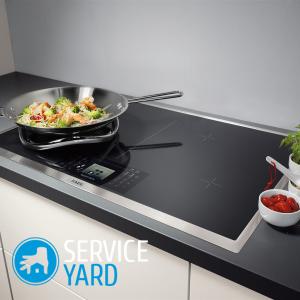
Need to replace a stove in the kitchen? Naturally, there is a desire to acquire something functional, reliable and modern. Among the huge number of offers, some of the leaders are induction and glass-ceramic stoves. Which option to give preference? Which of these plates is more reliable and functional? The answer is not easy, because in fact, each of them deserves attention and is suitable for one or another mistress. The choice depends on many factors, which ones - we will understand in this article. So, which stove is better - induction or glass ceramics, why and for whom?
to contents ↑Which is better - induction or glass ceramic hob?
These two types of stoves crowded the “old-timers” of the kitchen with protruding heaters. Both options look quite respectable. Externally, these plates are similar to each other, but have different heating methods. For this reason, they have their own disadvantages and advantages.
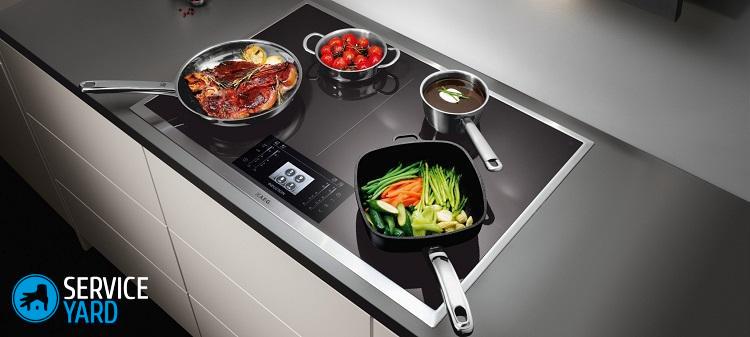
Glass ceramic
These models differ in such a device:
- Different models of glass-ceramic plates can use heating elements of tape, spiral or halogen types.
- The hob is a solid sheet made of glass ceramics.
- Directly under the hob are heating elements.
To analyze which stove is better - induction or glass ceramics, we consider the advantages and disadvantages of the latter.
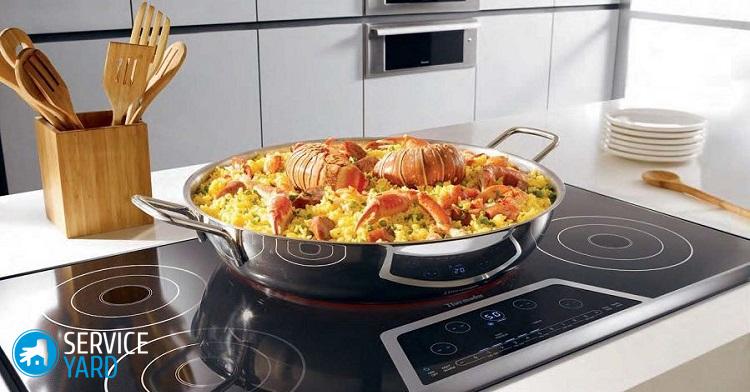
Benefits:
- Good heat resistance. The stove, having great resistance to high temperatures, withstands 600-degree load.
- Strength, shock resistance.
- Low power consumption. This is a peculiar saving tool.
- Quick cooling of the hob. By changing the position of the switch, you can maintain dynamic heating of the burner.
- Control over the heating zone - the ability to control the heating area for different sizes of dishes.
- The possibility of using dishes of various configurations.
- Additional functionality is a timer, automatic cooking mode, turning off the stove when boiling, etc.
- Child protection. This feature blocks kids from access to control and prevents accidents.
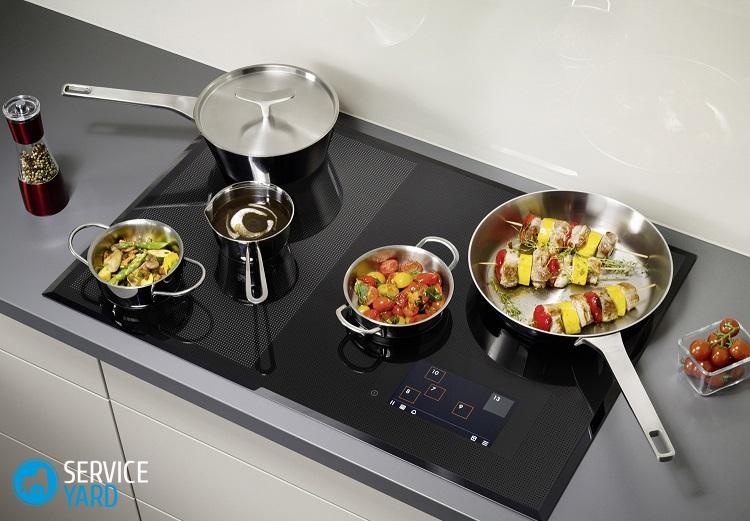
Disadvantages:
- The need for special care. In fact, everything is not so complicated. You just need to use special cleaners designed for glass ceramics. All other cleaning powders can cause oxidation and micro-scratches. To remove dirt, you can use a special scraper with a thin blade.
- The need to purchase special dishes. Familiar pans and pans, which are used when cooking on gas stoves, are not suitable. It is advisable to acquire dishes with an even thick bottom. At the same time, the circumference of the bottom of the dishes should not be less than the area of the heating zone.
Important! The material for making dishes is also of no small importance:
- Ceramics, glass, and other materials with low thermal conductivity are best avoided.
- Do not use copper and aluminum utensils, as they leave marks on the surface.
- The best option is stainless steel and glassware labeled “for glass ceramics”.
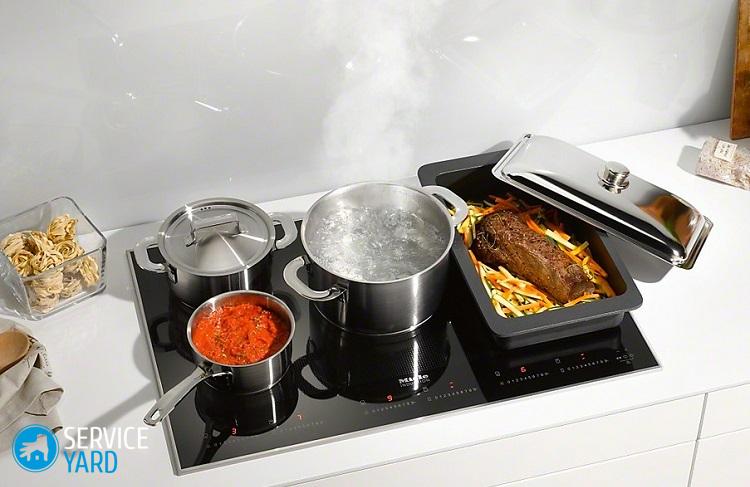
Induction cookers
- The induction heating method is an innovation in the development of kitchen appliances: The heating element is replaced by an electromagnetic coil - a source of a powerful magnetic field.
- It generates a high-frequency eddy current, which provides heating of the bottom of the dishes and its contents.
- The material of the cooking surface of induction cookers is the same as that of glass-ceramic.
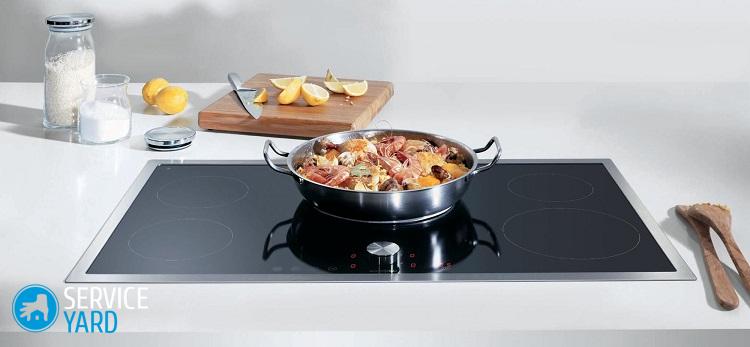
Benefits
So, what is the best induction hob?
- Low power consumption.
- Fast heating, which reduces cooking time.
- Safety - due to the lack of heating of the work surface. After you remove the dishes, it remains a little warm.
Important! The microclimate in the kitchen is more comfortable than when using electric and gas stoves.
- Ability to select different operating modes If necessary, you can quickly boil water or stew vegetables with minimal heat.
- The ability to instantly change the temperature (up to 1 degree).
- The stove does not turn on if dishes are placed on it whose bottom diameter is less than 12 cm.
Important! A fork or spoon accidentally left on the stove will not trigger a switch. Therefore, if we talk about security, the answer to the question, infrared or induction board - which is better, will clearly not be in favor of glass ceramics with a heating element.
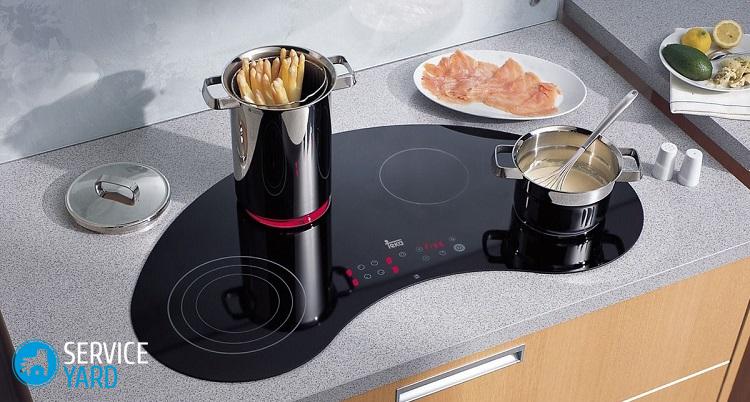
Are there any disadvantages?
There are few of them, but they are available:
- Glass ceramic, from which the hob is made, is a durable but brittle material. Therefore, during installation, you must follow certain caution.
- It is advisable to install the stove away from the refrigerator, dishwasher and other metal items of household appliances, as it can cause interruptions in work.
- The need to purchase dishes, the bottom of which has ferromagnetic properties (you can check the presence of such properties by applying a conventional magnet).
- High price.
- Noise during work
What to choose?
So, the comparison is made. Which option is preferable, which burners are better - ceramic or induction?
- If you want to save money, then glass ceramics is your choice, because it is cheaper.
- If you want to save time on cooking and strength when caring for the stove, then you should pay attention to the induction device.
to contents ↑Important! The dishes will have to be replaced in both cases. As a temporary option, any metal utensil checked with a magnet is suitable for an induction cooker. But the efficiency will be lower than when using pots with a ferromagnetic bottom.
Stock footage
So quickly and easily, we dealt with the question that seemed very complicated, which stove is better - induction or glass-ceramic. We hope that now you will just as well make the right decision and not regret it.
- How to choose a vacuum cleaner taking into account the characteristics of the house and coatings?
- What to look for when choosing a water delivery
- How to quickly create comfort at home - tips for housewives
- How to choose the perfect TV - useful tips
- What to look for when choosing blinds
- What should be running shoes?
- What useful things can you buy in a hardware store
- Iphone 11 pro max review
- Than iPhone is better than Android smartphones



